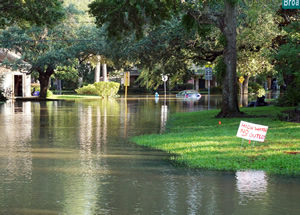Water Damage Restoration: Your Post Flood Clean Up Checklist
 If your San Antonio home is severely damaged by water from a flood, your first instinct once the waters recede is to get back in there. You’ll want to start cleaning up and rebuilding as quickly as possible. It’s human nature. However, the wood, sheetrock or anything porous in the building has probably absorbed a lot of water. This means that it’ll be susceptible to mold, insects, and structural failure. Water damage restoration is a process that can’t necessarily be done quickly. Here is a checklist of things to do when you need flood damage repair.
If your San Antonio home is severely damaged by water from a flood, your first instinct once the waters recede is to get back in there. You’ll want to start cleaning up and rebuilding as quickly as possible. It’s human nature. However, the wood, sheetrock or anything porous in the building has probably absorbed a lot of water. This means that it’ll be susceptible to mold, insects, and structural failure. Water damage restoration is a process that can’t necessarily be done quickly. Here is a checklist of things to do when you need flood damage repair.
Insurance
After everyone is safe, contact your insurance company right away. They’ll be able to advise you as to what is covered in your policy. Then, if your building is safe, you can go in and start cleaning up and salvaging what you can. Make sure to take lots of photos of the damage. The adjuster will also come and survey the damage and provide you with a proof of loss statement.
Furniture and Carpets
You can start removing damaged carpets, rugs, and furniture from your home. These can either be placed outside to dry or discarded. Carpet pads are the most susceptible to absorbing contaminants and should be thrown away immediately. Carpets and rugs can be hosed off if you want to try salvaging them. You’ll want to sanitize them with a mixture of 1 gallon of water to 2 tablespoons of chlorine bleach. Don’t reinstall the carpet until it is completely dry, or else you could be in danger from the mold. Upholstered furniture should be thrown away, but if it is valuable, then you might try re-upholstering. If the furniture is solid wood, plastic, or metal, then you can hose it off and let it dry completely before bringing them back inside.
Water Damage Restoration for Walls
Much of the work with walls and the structure of your home should be performed by a professional water damage restoration company. You can ventilate the home immediately and dry out whatever spots you can. You can also take off your baseboards and cut holes in your walls to drain out water. Flood damage repair can be dangerous, since the structure of the home may be compromised. Don’t do anything that has the potential to harm you or cause more damage to the home.
Cleaning Walls and Floors
After a professional has deemed it safe, you may be able to go in and start cleaning some areas of your home. Doing this can help prevent mold and further water damage. Dry as many spots as you can with towels and ventilation. You can set up fans to help with air circulation. Use a disinfecting cleaner to wash the walls but wear a mask to avoid breathing in mold spores.
Mold
Even if you have had water damage restoration performed in your home, there will still be a risk of the mold for quite some time afterward. Keep your home well ventilated and use your HVAC system to circulate air. You can also use a dehumidifier. Make sure to use exhaust fans when cooking and in the bathroom.
After the waters have receded, your first thought may be to get in and start rebuilding. Make sure to follow the flood damage repair checklist so restoration is done properly and safely. Contact Vintage Reconstruction to help you with all of your water damage restoration needs.
